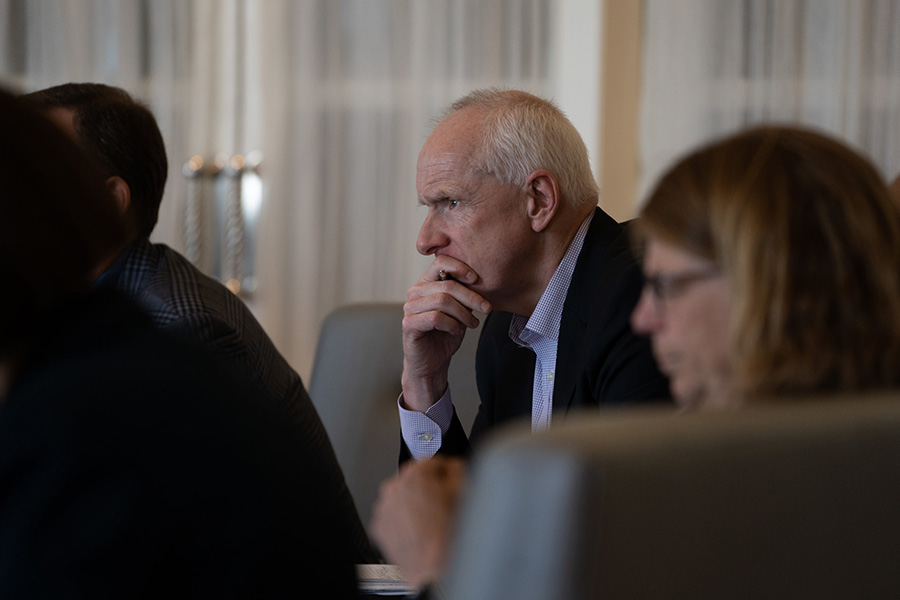Warner Thomas has been the chief executive of Ochsner Health System since 2012 and, prior to that, he served as President for 14 years — meaning he was among the New Orleans-headquartered enterprise’s top executives during the devastating Hurricane Katrina.
Today, Ochsner’s purchase of hospitals from Tenet in Katrina’s wake has been well-documented, particularly how much Ochsner has expanded its footprint in Louisiana. What’s less discussed, however, is how acquiring hospitals from Tenet marked the beginning of Ochsner stepping out of its comfort zone and becoming more innovative.
Health Evolution Editor-in-Chief Tom Sullivan spoke with Thomas about the biggest professional risk he’s ever taken, working with tech partners Apple and GE, and his strategic priorities for the next three to five years.
Health Evolution: Having served as a top executive for more than two decades now, what is the biggest business risk you’ve ever taken?
Thomas: The biggest business risk was purchasing several hospitals from Tenet in the aftermath of Hurricane Katrina. It was uncertain and would be a long tail to have benefits, but it was critical to our community and the redevelopment at the time. That was a huge risk that has turned into a positive thing for our organization and we’re not sure where New Orleans would be without that.
Health Evolution: What has been the upside? How has it changed you as a leader and Ochsner as an organization?
Thomas: It was the beginning of challenging Ochsner to think bigger, get out of its comfort zone, and do something very innovative. It was controversial internally, some physicians were not sure how it would work or impact the organization long-term. It was not uniformly supported.
[See also: CEOs, top executives share the best advice they ever received.]
Health Evolution: Fast forward to 2020, of course, and Ochsner has a reputation for innovation including work with General Electric and being one of the first health systems to work with Apple, as well as InnovationOchsner. So what’s your modern day driving philosophy about innovation?
Thomas: Ochsner has been an innovator for decades. We’ve just innovated in different ways. Innovation today is different than it was 10 or 20 years ago. We’ve continued to evolve to address the needs of patients and the communities we serve. It’s about how we take care of our patients, provide better outcomes, a safer environment. Putting patients at the middle of everything we do – that drives genomics, digital health, consumerism, access, those are all around how we provide a better experience.
Health Evolution: And as a follow-up, what have you learned from working with companies such as GE and Apple that you might otherwise not have?
Thomas: The fact that we’ve built these partnership has allowed us to grow, to innovate, to build relationships in communities. We’ve gained a tremendous amount of benefit and knowledge that has been an essential component of our success. Our partnership model has been critical to the latest phase of Ochsner’s growth and will be important because hospitals can’t own everything, can’t build everything, can’t develop everything and we’ve improved our understanding of that in the last seven years.
Health Evolution: When you look out three to five years, what are your top priorities?
Thomas: We think about heath care now as two main areas of focus, continuing to optimize and retool our physical assets and locations to provide high quality access, great service, which has been our core business for many years and, at the same time, we need to build a digital platform. We’ve been spending a tremendous amount of time on building that platform, on connectivity, learning what consumers are looking for and how we connect with them outsider our walls. Its’ not one or the other, it’s both. Traditional HCOs have to develop those skill sets. With that as the backdrop the second thing we think about is consumerism and how people will consume health care in the future, how we can use information to provide a better experience, how we use data to take care of patients in a better fashion.
For the last 10-15 years, health care has gone to EHRs, the real power is now we have to figure out how to put that data to work to be more proactive and predictive. Third, we think about continuing to build our talent pool, our clinical practice and at the same time make sure we have the best of the best from administrative and tech perspective. Talent has become such an important component in the changing world we’re in today. The last thing is how we get more regional, scale and partner with other systems looking to do similar things to cover a broader geography.
Related articles:
Should you speak your mind on controversial topics? CEOs are divided
CEOs talk top priorities for the next 3-5 years
Innovating care delivery with ‘radical common sense’: An interview with CareMore CEO Sachin Jain











